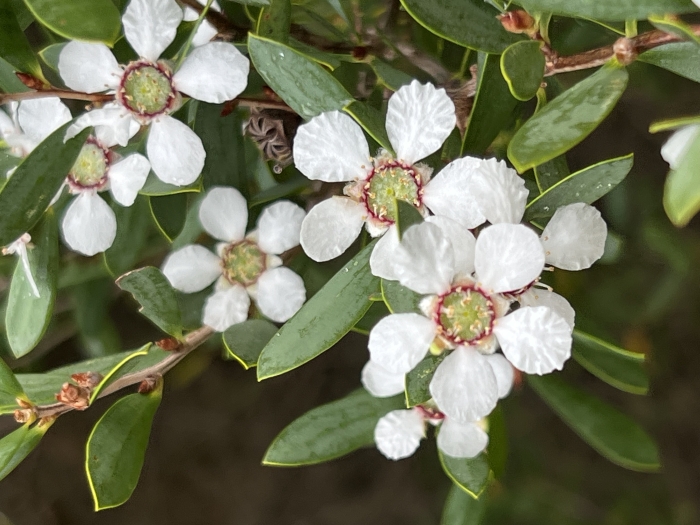Coast Tea Tree
(Leptospermum laevigatum)
Coast Tea Tree (Leptospermum laevigatum)
/
/

Allthingsnative
CC BY-SA 4.0
Image By:
Allthingsnative
Recorded By:
Copyright:
CC BY-SA 4.0
Copyright Notice:
Photo by: Allthingsnative | License Type: CC BY-SA 4.0 | License URL: https://creativecommons.org/licenses/by-sa/4.0 | Uploader: Allthingsnative | Publisher: Wikimedia Commons | Title: Leptospermum_laevigatum_01.jpg | Notes: Transferred from Flickr via #flickr2commons |













































































Estimated Native Range
Summary
Leptospermum laevigatum, commonly known as the Coast Tea Tree, is a shrub or small tree endemic to coastal dunes and rocky outcrops in south-eastern Australia. It is evergreen and typically grows to a height of 1.5–6 m (4 ft 11 in – 19 ft 8 in) with a bushy habit. The older stems have thin, rough bark, while the leaves are narrow, egg-shaped, and aromatic when crushed. The white flowers are relatively large and showy, appearing in spring and early summer, and are followed by flat-topped fruit that is shed soon after maturation. This species is valued for its hardiness and ability to stabilize sandy soils, making it useful for windbreaks, hedging, and rehabilitation of disturbed sites.
Coast Tea Tree thrives in full sun to part shade and requires medium amounts of water, preferring soils with fast drainage. It is salt-resistant and often used in coastal plantings and amenities landscaping. However, it can be potentially invasive outside its native range, as seen in Western Australia and the Central Coast of California, where it is known as the Australian Tea Tree. The seeds are adapted for dispersal by wind and water. Gardeners should be cautious of its invasive potential and check local regulations before planting.CC BY-SA 4.0
Coast Tea Tree thrives in full sun to part shade and requires medium amounts of water, preferring soils with fast drainage. It is salt-resistant and often used in coastal plantings and amenities landscaping. However, it can be potentially invasive outside its native range, as seen in Western Australia and the Central Coast of California, where it is known as the Australian Tea Tree. The seeds are adapted for dispersal by wind and water. Gardeners should be cautious of its invasive potential and check local regulations before planting.CC BY-SA 4.0
Plant Description
- Plant Type: Shrub, Tree
- Height: 6-24 feet
- Width: 6-18 feet
- Growth Rate: Rapid
- Flower Color: White
- Flowering Season: Spring, Summer
- Leaf Retention: Evergreen
Growth Requirements
- Sun: Full Sun, Part Shade
- Water: Medium
- Drainage: Medium, Fast
Common Uses
Bee Garden, Bird Garden, Butterfly Garden, Deer Resistant, Drought Tolerant, Erosion Control, Hedges, Low Maintenance, Salt Tolerant, Showy Flowers, Street Planting
Natural Habitat
Coastal dunes and rocky outcrops in south-eastern Australia
Other Names
Common Names: Coastal Teatree, Australian Myrtle, Australian Teatree, Australiese Mirt
Scientific Names: , Leptospermum laevigatum, Fabricia laevigata, Fabricia myrtifolia,
GBIF Accepted Name: Leptospermum laevigatum (Gaertn.) F.Muell.